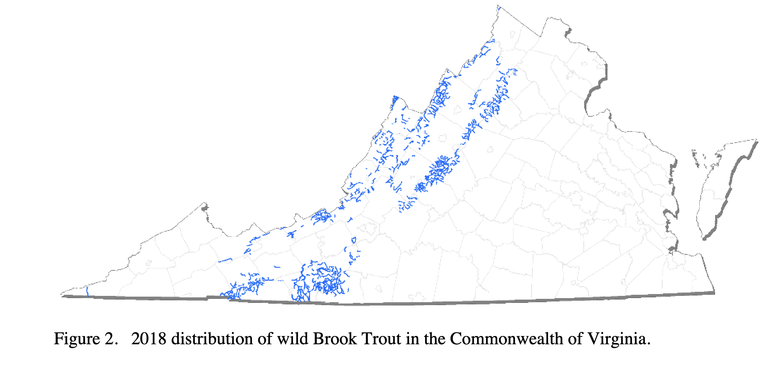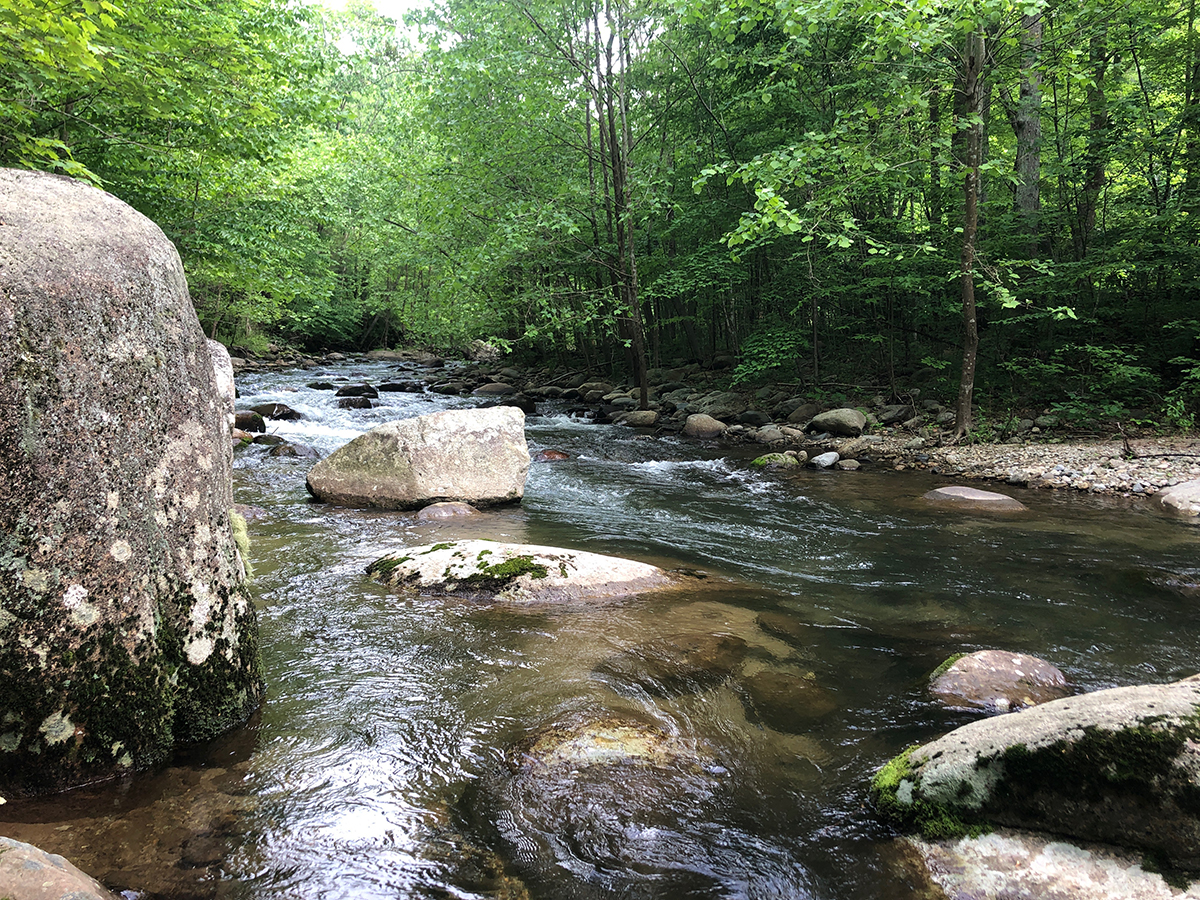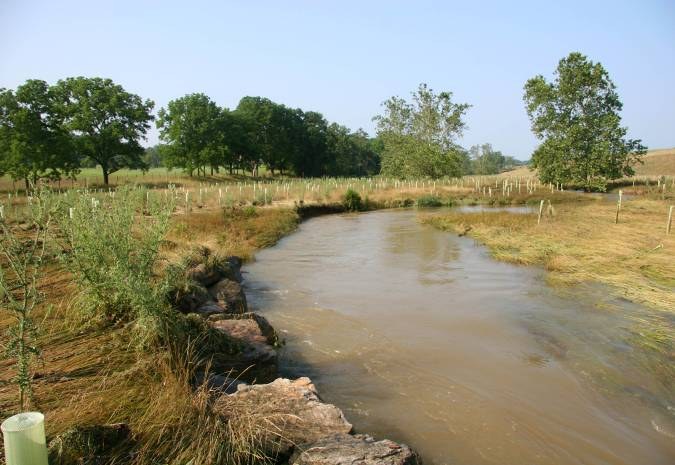Interview with Brad Fink, Virginia Department of Wildlife Resources

Brook trout is Virginia's state fish, and its only native salmonid. Virginia's biologists often refer to it according to its scientific classification: char. According to the state's wild trout management plan, Virginia currently has 614 wild brook trout streams stretching over 2000 miles through western and southwestern VA. Brook trout is a Virginia Species of Greatest Conservation Need, reflecting its decline and also cultural and ecological importance. It is hard to say exactly how far it has declined; the extent of historic occupancy by brook trout in the state is uncertain. One thing is understood: the Appalachian mountains and foothills of Virginia are a resource gem. Many wild trout streams are in the protection of Shenandoah National Park and the George Washington and Jefferson National Forest.
Follow this link for more information on Virginia's wild trout resources, and links to other state plans.

Please tell us what you do for the Virginia Department of Wildlife Resources, generally and for brook trout.
Currently I’m the statewide Coldwater Fisheries Biologist responsible for both our stocked trout program and our wild trout management plan. In addition, I have general District Biologist duties such as biologist reports, public meetings, outreach efforts and basically whatever comes along from a public fisheries management stand point.

What excites you the most about working on brook trout streams?
Brook trout are a good indicator species for habitat and they’re a species of greatest conservation need in our DWR Wildlife Action Plan. A fair amount of the public is concerned about brook trout as well so it’s easy to get stakeholder input. You don’t hear much from the local Common Carp Unlimited Chapters. Also just getting out in the mountains, a lot of our brook trout streams are in remote areas where you’re likely to see other wildlife and good views.

Is there something you'd like people to know about brook trout?
They are an indicator species that need fairly good habitat. However, they may be more resilient than we think, if habitat is protected. Habitat degradation is one of the main concerns for conserving brook trout, and it’s one we can actually have an impact by restoring channelized streams, cut banks and installing instream structures.

I'm aware you are sampling streams for eDNA of brook trout. What is that/ how is it used to help manage brook trout?
The field method for sampling eDNA is fairly simple and efficient. In 2019 we sample 36 streams where we thought Brook Trout may be extirpated. These streams were thought to be extirpated because we located Brook Trout with backpack electrofishing before 1990, but not after 1990. Eight of these streams came back positive for eDNA. So now we have a list of streams to look at to determine if repatriation is required. In 2020 we paired our back pack electrofishing with eDNA samples to see if we were possibly missing trout with our electrofishing gear. We paired a total of 56 sites and got a match at 52. So basically we picked up eDNA at 4 sites where we didn’t collect fish with the backpack shocker. DWR plans to roll eDNA sampling into our coldwater stream survey protocol moving forward. eDNA will only be collected and sent off for analysis in streams we do not collect Brook Trout with electrofishing, or for streams in very remote locations where only presence / absence data is required.

What gives you hope about the future for fishable, wild brook trout?
Here in VA the majority of our trout streams are on protected public lands so we have a good handle on habitat protection.
For more information from VDWR on trout streams, see this blog from 2021.
Brad is the Virginia Department of Wildlife Resources (VDWR) Coldwater Fisheries Biologist stationed in the Verona Regional Office. Currently, he manages fisheries in five counties and coordinates the statewide stocked and wild trout programs. His district includes the counties of Alleghany, Bath, Highland, Rockbridge and Augusta. Brad’s rivers include the Jackson River Tailwater, Maury River, and multiple stocked and wild trout streams. He also manages multiple impoundments that are stocked with trout for put-and-take and put-grow-and-take in an 11 county area of Northwestern Virginia. He has 20 years of experience in aquatic sciences/species management including stream restoration, shoreline structure, and climate change research regarding Brook Trout. Studies including brook trout, least brook lamprey, muskellunge, and freshwater mussel distribution. Additional experiences with urban stream management/restoration and recreational fishing opportunity enhancement. He was a past survey field crew leader for Wyoming Dept. of Game and Fish, Indiana DNR, and USDA Forest Service.
Document Actions





